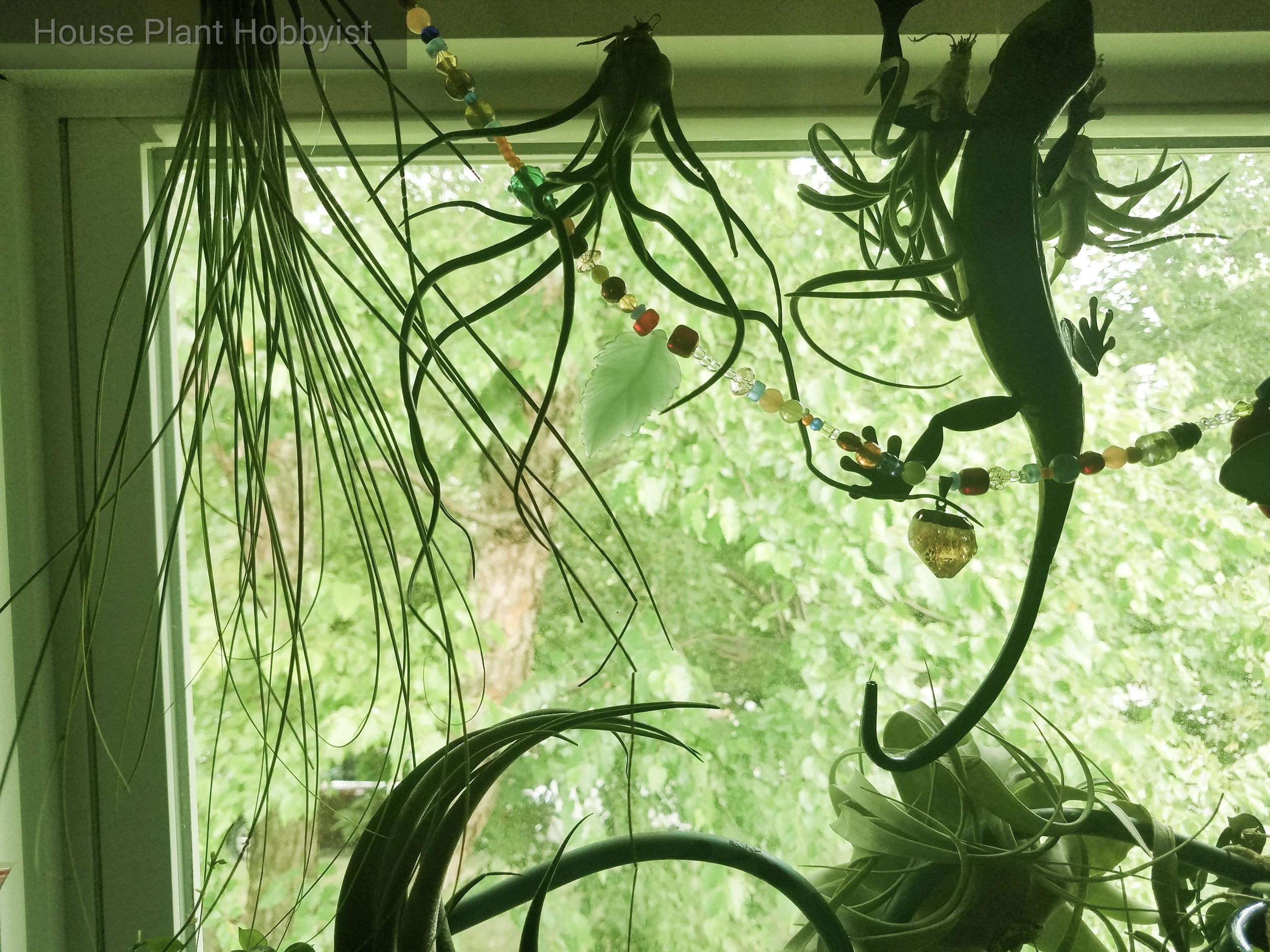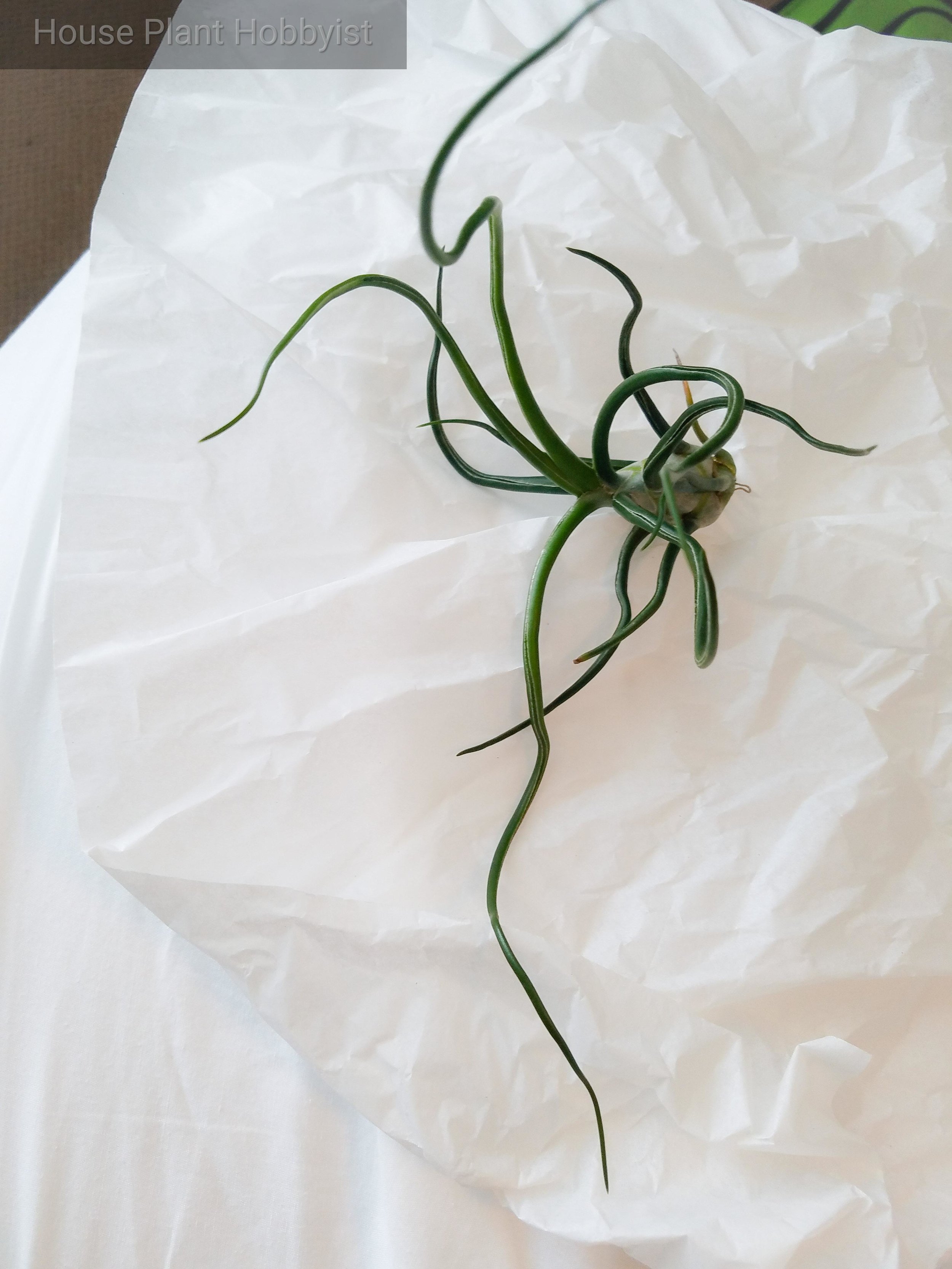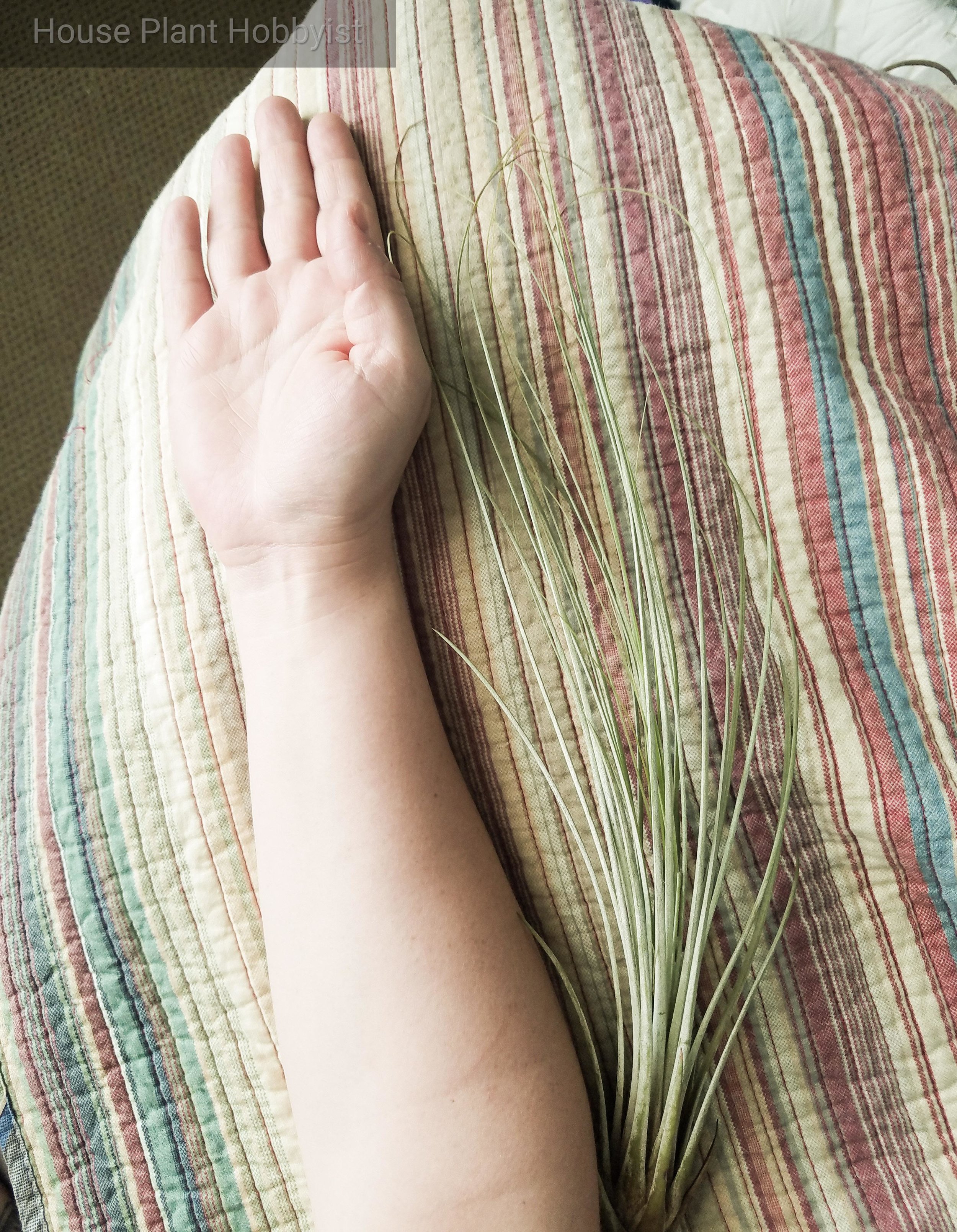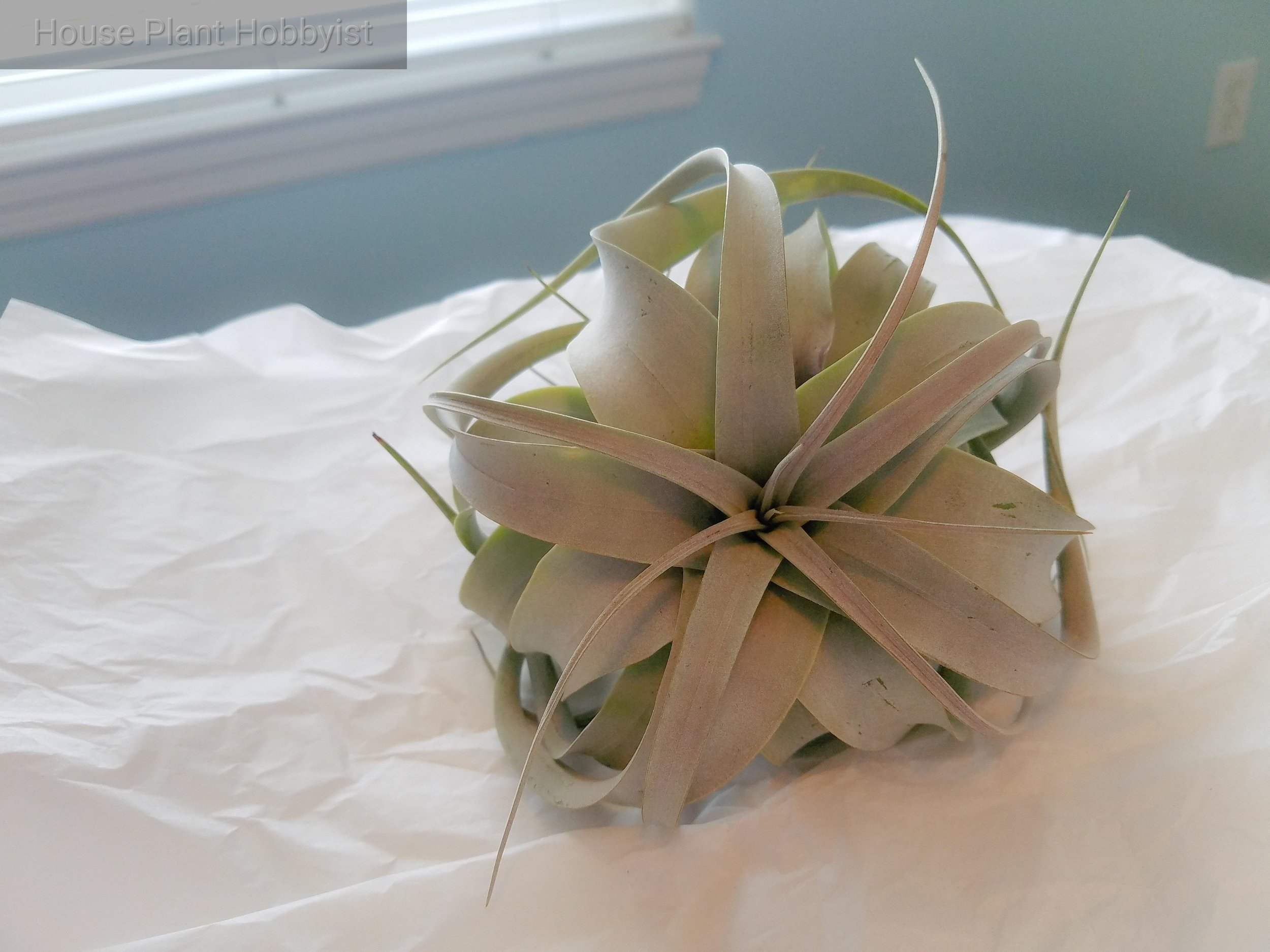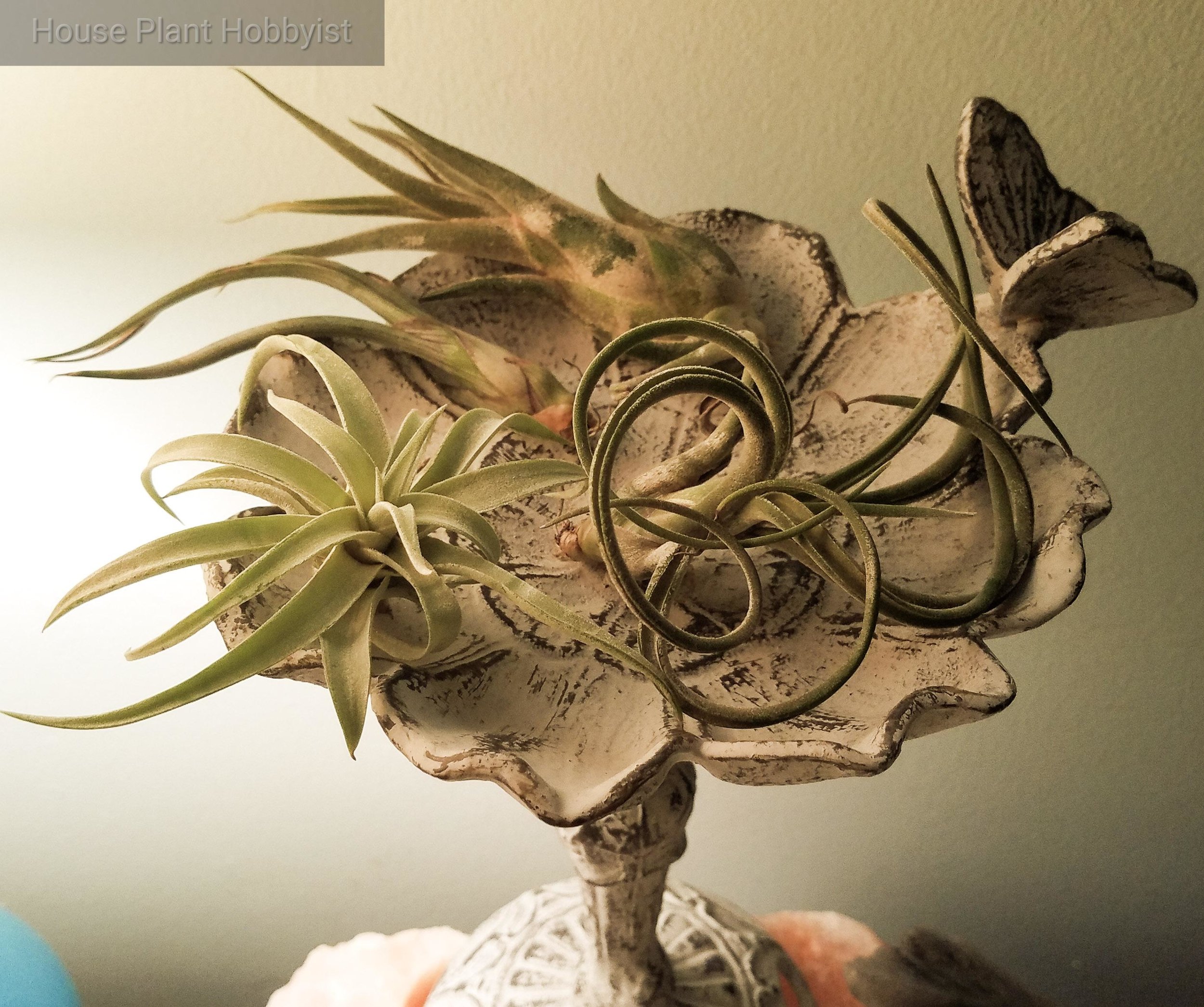Air Plant Care
We see them all the time, and hear about how they are the easiest plants to care for because they don’t even need dirt. Sounds way too simple to actually be true, but it really is that easy to care for Tillandsia, or Air Plants. Before I get into how I care for my Air Plants, let me first say that a lot of the time you see them glued into globes, or pieces of wood, or anything else that can hold water. Whenever I buy an Air Plant and it is attached to, or in, something like that, I always remove them as soon as I get home. Usually the glue comes right off because it is just hot glue, but if it doesn’t do not worry because it will come off after a nice soak. Is this a bad time to mention that there are quite a few different types of Air Plants? I mean hundreds of different types of them and they are all different sizes and shapes. Some are smooth, some have short trichomes, and others have longer and more fuzzy looking trichomes. Trichomes are the little white fuzz you see on Air Plants that can absorb water and nutrients from the air. All right, let’s get into care.
Light
Air Plants like bright, indirect sunlight. For instance, mine are in front of a south facing window that is shaded by a big old yellow birch. If your air plants are going to be in a south facing window I would suggest putting them behind a sheer curtain, or moving them back so they aren’t directly in front of the window. If you keep yours outside just remember that these are tropical plants, so they cannot be exposed to frost, or lower temperatures. The temperature range for air plants is about 50-90 F, or 10-32 C.
Watering
The name “Air Plants” is a bit confusing, almost like they can just live on the air and not get any water. Well, I can assure you that they definitely need water. These are tropical plants that don’t live in the soil because they are epiphytes. Epiphyte is a fancy way of saying that they are a plant that live on other plants in the wild and get their nutrients and moisture from rain, the humidity in the air, and plant debris that accumulates around them. If you didn’t already know that, then see, you DO learn something new every day!
There are a couple ways that you can water Air Plants. You can mist them daily, you can mist them and soak them, or you can just soak them. All I do is soak mine for 30 minutes once a week. In saying that, I can get away with one nice long soak once a week because the humidity in this room is usually around 60-65% in the summer. No matter which method that you use to water them, you must always make sure to turn them upside down and shake the water out of the center of them. They should then sit in an area that has good enough air circulation that they are dry within 4 hours, otherwise you risk the crown, or center of the plant, rotting. What I do is hang them all upside down for a couple hours to make sure that they are completely dry. Remember that how often you water them depends on how dry the climate you live in is. Thankfully these plants are fairly forgiving, so if you start to notice brown ends, then you should water more often.
Now that I have talked about how to water them, I should probably mention the type of water to use. Honestly, any type of water will work to soak them, but I only use rain water or water from one of my fish tanks. Whenever I am watering my plants I just toss all of my Air Plants into the fish tank so they are fully submerged, then take them out after 30 minutes. If you don’t have a fish tank, that is perfectly fine. A bowl, bucket, sink, even a bathtub would work to let them soak in.
Fertilizing
You wouldn’t think that something called an Air Plant needs fertilizer, but they do. Mine do well enough on rain water and fish tank water, both of those have enough nutrients that my Air Plants get everything they need that way. If you don’t have a fish tank, then you can get online and readily find places that sell Air Plant fertilizer. Some of them are in spray form, which would make fertilizing very easy, or messy. I’m not sure. I feel like I would probably just end up spraying fertilizer all over, like one of those bad commercials where the actor tried to pour themselves a drink then somehow ended up pouring pop all over their entire house. I might be a little clumsy. I would probably just put them in the bathtub to spray them with fertilizer, just to make sure I didn’t spray it on things like walls or floors. If you don’t feel like going online to buy Air Plant fertilizer, you can always just use a normal house plant fertilizer at 1/4 the strength that is recommended for other plants.
Pruning
I mentioned that air plants can get sort of crunchy brown leaf tips. If that happens and you aren’t a fan, and like pruning, then you are in luck. Those brown leaf tips can easily be cut off if they bother you. Also, in time your plant might shed some lower leaves, which is perfectly fine. All you need to do is give them a slight tug, and they should come right off. If they don’t, then you can pull those scissors back out and cut the brown leaves off.
Flowering
In time your plant will bloom, and it will be amazing. Well, I think it is. Either way, they will only bloom once in their life, and those blooms can last anywhere from days to months depending on the type. The type of Air Plant also determines what time of year the air plant will bloom. I personally think all of their flowers are pretty spectacular.
Congrats! Now that your Air Plant has finished blooming it will start producing pups. No, sadly not puppies, which would make the plants a billion times better in my book. Pups are what you call the baby Air Plants, which will grow on the bottom of the mother plant. Each individual plant will produce anywhere from one to eight pups. You can either let them stay attached to the mother and sort of form a cluster, or you can remove them once they are about 1/3 the size of the mother plant, you can remove them. To separate the pups from the mother, gently grab both of them at their bases and sort of twist down. If you don’t feel like that method, you can use a sharp and very clean blade to cut the pup from the mother.
It may seem like a lot of care instructions for such an easy plant, but they are fairly simple. So simple that a lot of mine have been half crispy $1 clearance shelf finds. One of which bloomed within the first year of getting it, which is why it looks so bedraggled in this picture.
If you want to see more pictures of air plants, or have any questions, go to our Facebook page or group.

